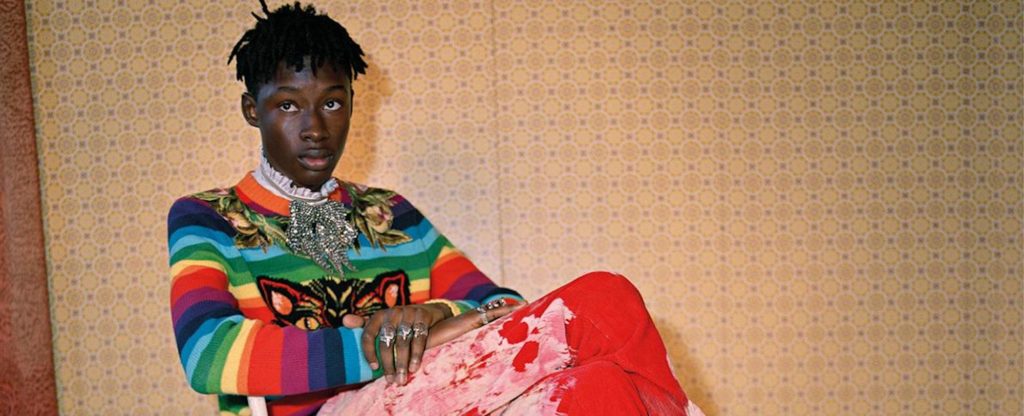Diversity in fashion is still an issue – incredible to believe when women of all colours and sizes wear clothes – as a recent report highlighted… yet again.
The Fashion Spot website kept careful tabs on the models during the Fall 2017 season in New York, London, Paris and Milan. Only 27.9 per cent of models weren’t white. And this was deemed a good year for models of colour.
The Italian fashion house Gucci attempted to redress the balance with their Pre-Fall 2017 collection. It was an all-black model homage to the iconic Malian photographer Malick Sidibé.
Some people couldn’t get enough: ‘Just kinda put Gucci on the map for me’.
We knew something was coming in January, when they shared clips of the audition process on Instagram.
Some people couldn’t get enough of it: ‘Just kinda put Gucci on the map for me’ while others were less enthusiastic, calling out the brand for appropriation:
‘Yes!!! To inclusion but no to stereotypes. Spirit animal? Soul? I feel like they are shuckin and jivin.’
In the end, the campaign, shot by Glen Luchford and styled by Gucci’s creative director, Alessandro Michele, turned out to be a visual treat. The clothes are beautiful. The models are too. It’s inspired by the poses and patterns of the sixties – from sweaty clubs playing Northern Soul in England to the dance parties where the cool sharp-suited kids in Bamako would dance till dawn.
You can see Sidibé’s influence in the black and white floors of Mildmay Club in London, the eclectic colourful clothes and props and the bold way the models stare down the camera.
There have been critics of Gucci’s campaign. R Eric Thomas in the New York Times said: ‘The campaign is commodity, not culture.’
He noted that in the Instagram video clip, they dance to The Night, a song performed by Frankie Valli & The Four Seasons – which is rock, not soul music. Gucci’s take on black culture doesn’t feel genuine.
‘Is it appropriation?’ Thompson asks in his fashion op-ed ‘Well, there’s the rub. It would be if the ads included the culture. Instead, Gucci presents a reverent, painstakingly recreated facsimile of a culture. More than anything, the campaign is about the look. It’s just drag. This is soul as drag.’
That what these fashion campaigns will always feel like: white souls inhabiting black bodies.
It’s not a huge shock that the campaign is all commerce, not culture. It’s an advertising spread for a fashion brand owned by one of the biggest fashion conglomerates – Kering also owns Yves Saint Laurent, Balenciaga and Puma.
Rappers and hip-hop stars have all been parading their Gucci recently. Ricky Rick hung out with A$AP Rocky at the Gucci show and after party. Rihanna rocked Puma trainers (owned by Kering) and a Gucci bejewelled body suit (owned by Kering) at Coachella. That looks pretty amazing but you can’t deny that it’s also a genius bit of product placement.
Just like the band Frankie Valli & The Four Seasons is made up of four white guys, the photographer, art director and stylist of the Gucci campaign are three white guys.
It’s a bit like that scene in Get Out, the masterful American horror-satire on race directed by Jordan Peele. If you still haven’t seen it yet, you deserve this spoiler… At a party thrown by his white girlfriend’s parents, one of the guests (and aspiring bodysnatcher) says to the main character Chris (who is African-America): ‘Being black is so on-trend’.
And that what these fashion campaigns will always feel like: white souls inhabiting black bodies. That is, they’ll feel like that unless there are back creatives, designers, photographers and stylists behind the cameras, choosing the music, styling the models, creating the clothes – and making some money.
So, the war is not yet won but it’s no reason not to celebrate the battles. Ghanaian Edward Enninful has just been named editor in chief of UK Vogue (see here) and we can’t wait to see how he shakes things up. Perhaps he’ll be able to inject the fashion bible with some real, authentic black soul – whatever that may mean.
